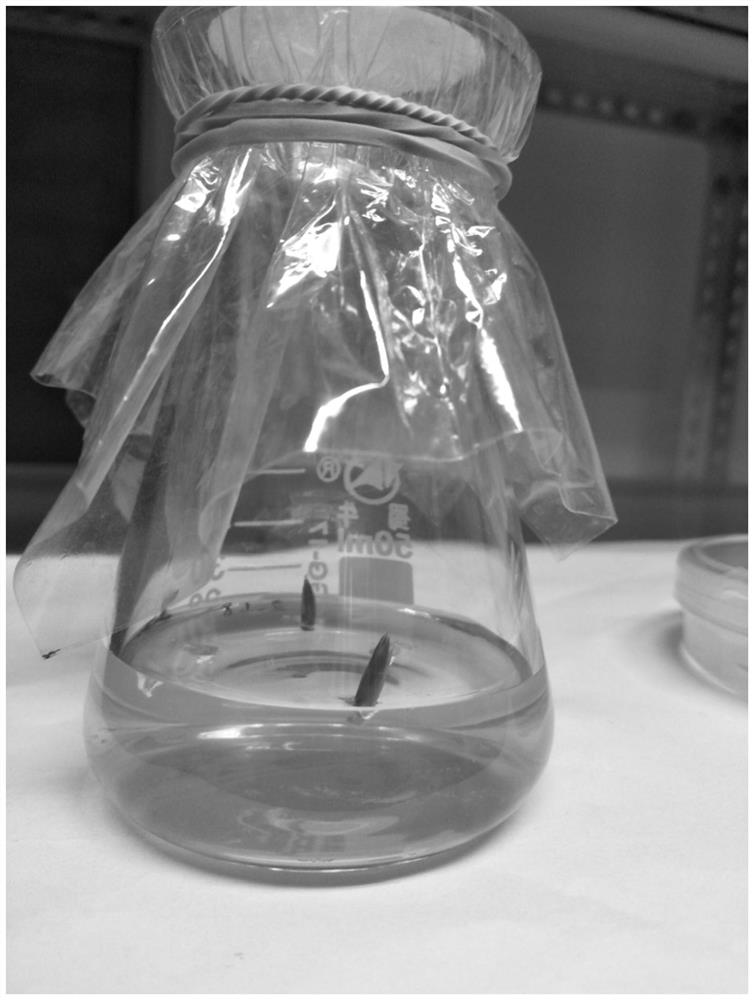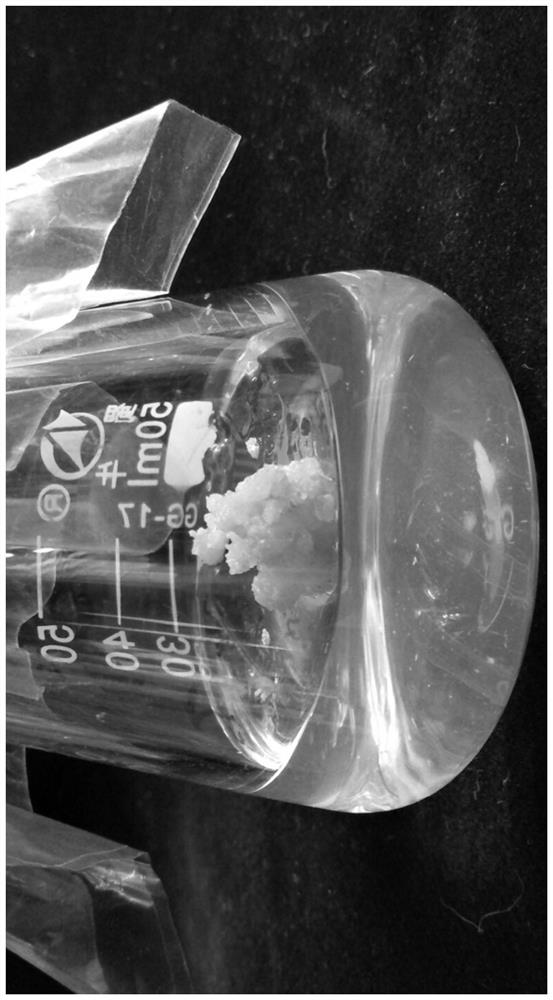Method for inducing embryonic calluses of large-fruit camellia chekiangoleosa
A technology of embryogenic callus and safflower camellia, which is applied in the field of plant cultivation, can solve the problems of germplasm degradation, difficulty in rooting, and difficulty in differentiating and regenerating plants, so as to reduce the degree of browning, avoid difficulty in disinfection, and facilitate disinfection treatment Effect
- Summary
- Abstract
- Description
- Claims
- Application Information
AI Technical Summary
Problems solved by technology
Method used
Image
Examples
Embodiment 1
[0039] Inducing Embryogenic Callus of Camellia oleifera
[0040] 1) Selection and treatment of explants: In December, take a healthy and disease-free safflower oleifera tree with new buds that year, remove the buds, use them as explants, and rinse them under tap water for 30 minutes. Drain the water, peel off the scales of the bud surface, pretreat it with 75% alcohol in an ultra-clean workbench for 30 seconds and rinse with sterile water for 3-4 times, and then disinfect with 0.1% (w / v) mercury chloride solution for 1 min. After rinsing with sterile water for 3-4 times, absorb the water with sterile filter paper, cut the old wound, and set aside.
[0041] 2) Embryogenic callus induction: The medium formula for embryogenic callus induction is: 1 / 2MS+6-BA2.0mg / L+NAA2.0mg / L, sucrose 30g / L, agar 3.0g / L, PVP2.0g / L, pH=5.4. The preparation method is: add 2.215g MS medium, 2.0mg 6-BA, 2.0mg NAA, 30g sucrose, 3.0g agar, 2.0g PVP per liter of pure water, and adjust the pH value to 5.4 w...
Embodiment 2
[0046] This example is used to compare the effects of different light conditions on the induction of embryogenic callus of Camellia oleifera, and the details are as follows:
[0047] According to the operating method of Example 1, the explants were inoculated into the induction medium and then cultured under two light conditions. The first is direct light culture, the light time is 12h / d, and the light intensity is 1200lux; the second is dark culture treatment for 7 days, and then the explant material is light-cultured, the light time is 12h / d, the light intensity 1200lux.
[0048] It can be seen from Table 1 that after the explants were inoculated, the light intensity was 1200lux, 12h / d, and the embryogenic callus appeared earlier and the induction rate was high. After the explants were inoculated, they were cultured in the dark for 7 days, followed by light culture, which had a slightly lower induction rate of embryogenic callus of Camellia oleifera. Therefore, after inoculatio...
Embodiment 3
[0052] This example is used to compare the effects of different hormone concentrations on the induction of embryogenic callus of Camellia oleifera, and the details are as follows:
[0053] According to the operating method of Example 1, the explants were treated and inoculated on induction medium supplemented with different 6-BA and NAA concentrations. Except for the different concentrations of 6-BA and NAA, the other components of the medium are the same: add 2.215g MS medium, 30g sucrose, 3.0g agar, 2.0g PVP per liter of pure water, and use 1M HCl solution or 1M for pH. Adjust the NaOH solution to 5.4. A total of 6 treatments were set up, and the culture conditions were the same as in Example 1. The statistical results after 4 weeks are shown in Table 2.
[0054] Table 2. Effects of different hormone concentrations on the induction of embryogenic callus of Camellia oleifera
[0055]
[0056] It can be seen from Table 2 that treatment No. 6 has the best effect on the induction of ...
PUM
 Login to View More
Login to View More Abstract
Description
Claims
Application Information
 Login to View More
Login to View More - R&D
- Intellectual Property
- Life Sciences
- Materials
- Tech Scout
- Unparalleled Data Quality
- Higher Quality Content
- 60% Fewer Hallucinations
Browse by: Latest US Patents, China's latest patents, Technical Efficacy Thesaurus, Application Domain, Technology Topic, Popular Technical Reports.
© 2025 PatSnap. All rights reserved.Legal|Privacy policy|Modern Slavery Act Transparency Statement|Sitemap|About US| Contact US: help@patsnap.com



